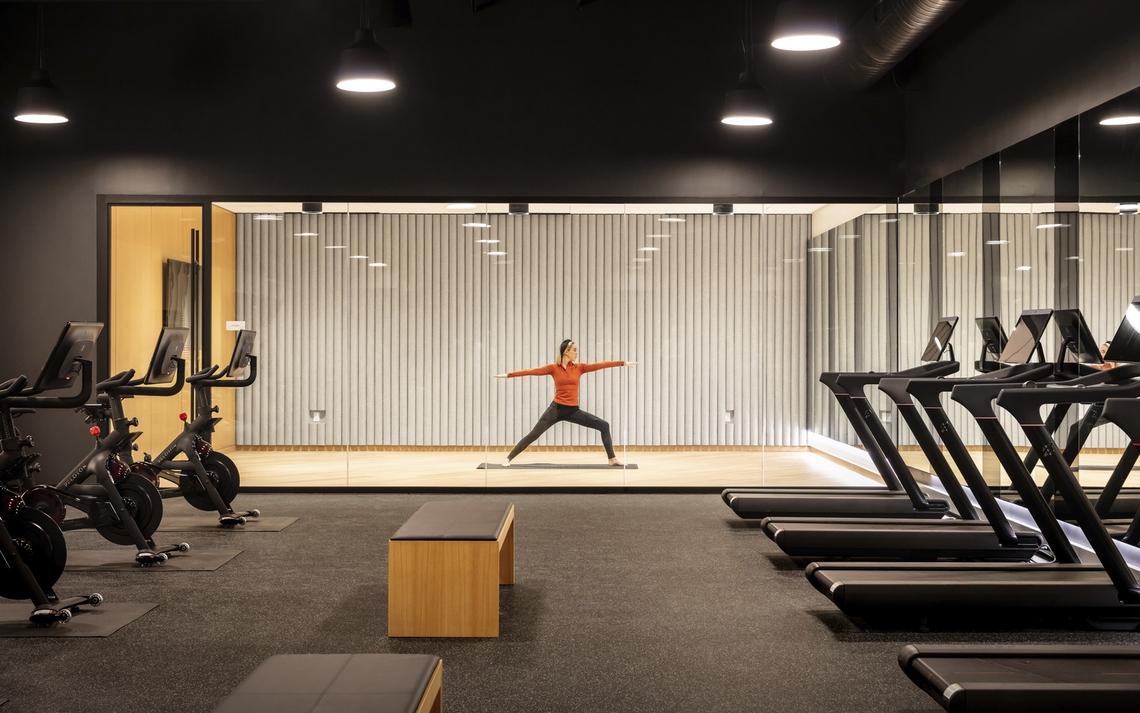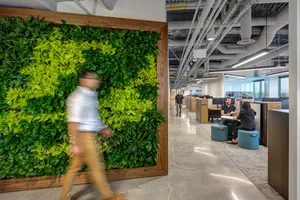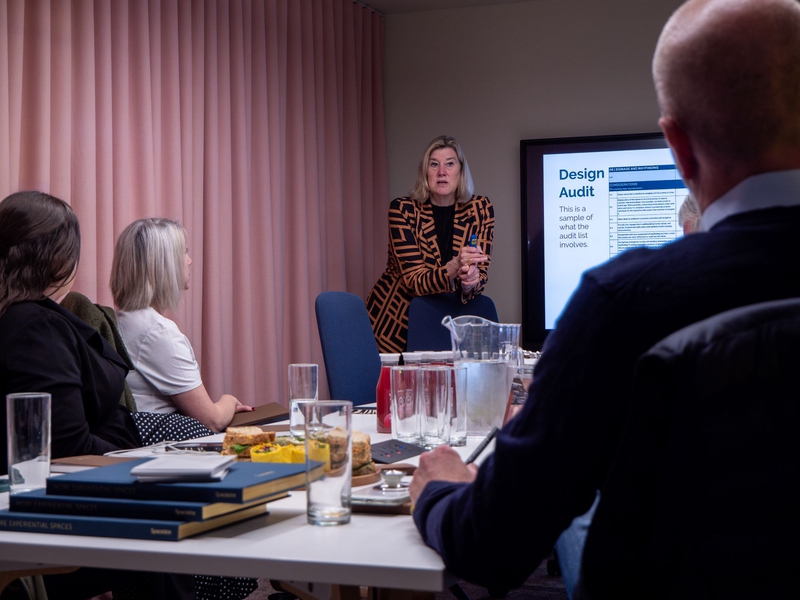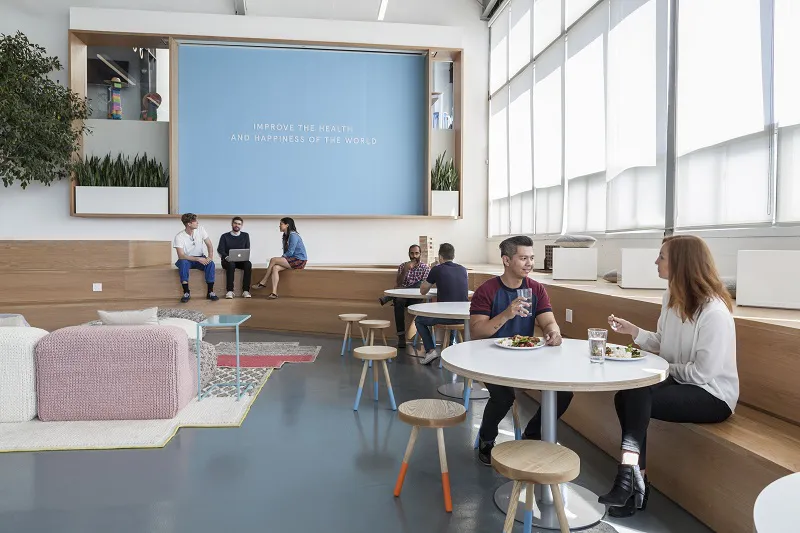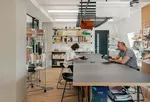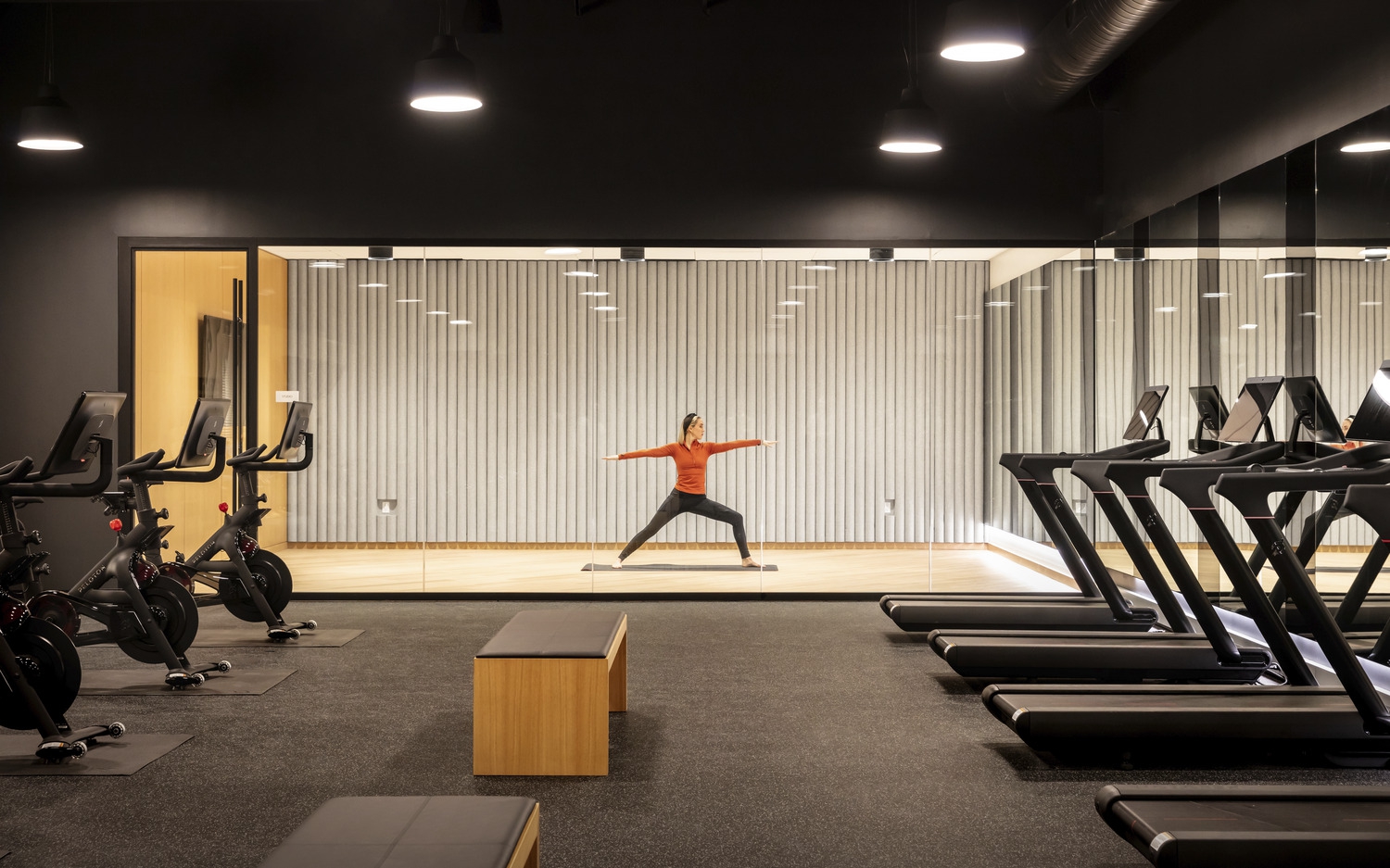
The Workplace Limbo - Comparing Workplace Approaches in US and UK with Corgan
Two leaders from Corgan sat down to compare how return-to-office strategies are evolving on both sides of the Atlantic
Photography credits: Corgan
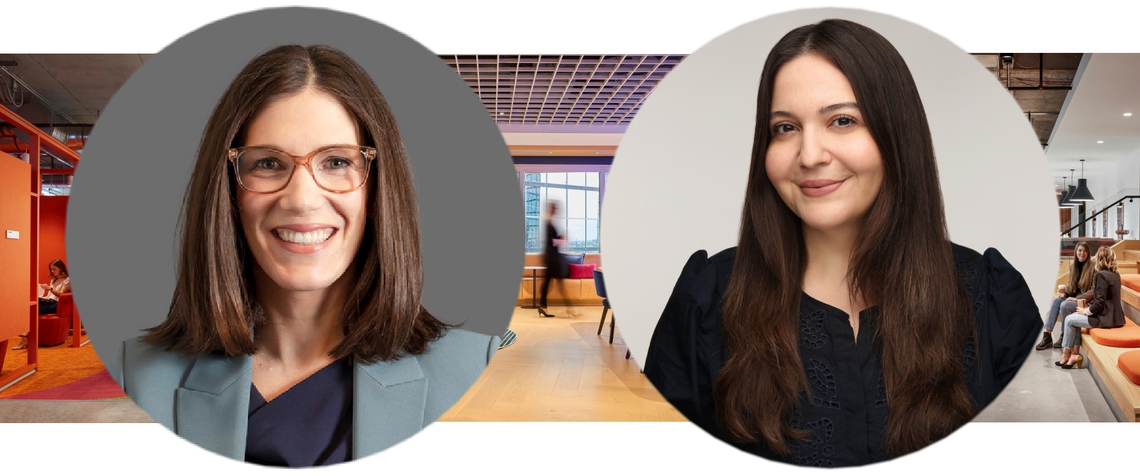
Two design leaders at Corgan - Lindsay Wilson based out of Dallas, TX and Doua’a Abdulhadi based out of London, UK - recently sat down to compare how return-to-office strategies are evolving on both sides of the Atlantic. Here’s how that conversation unfolded!
Lindsay Wilson, President and Interiors Sector Leader
Doua’a Abdulhadi, London Interiors Studio Leader
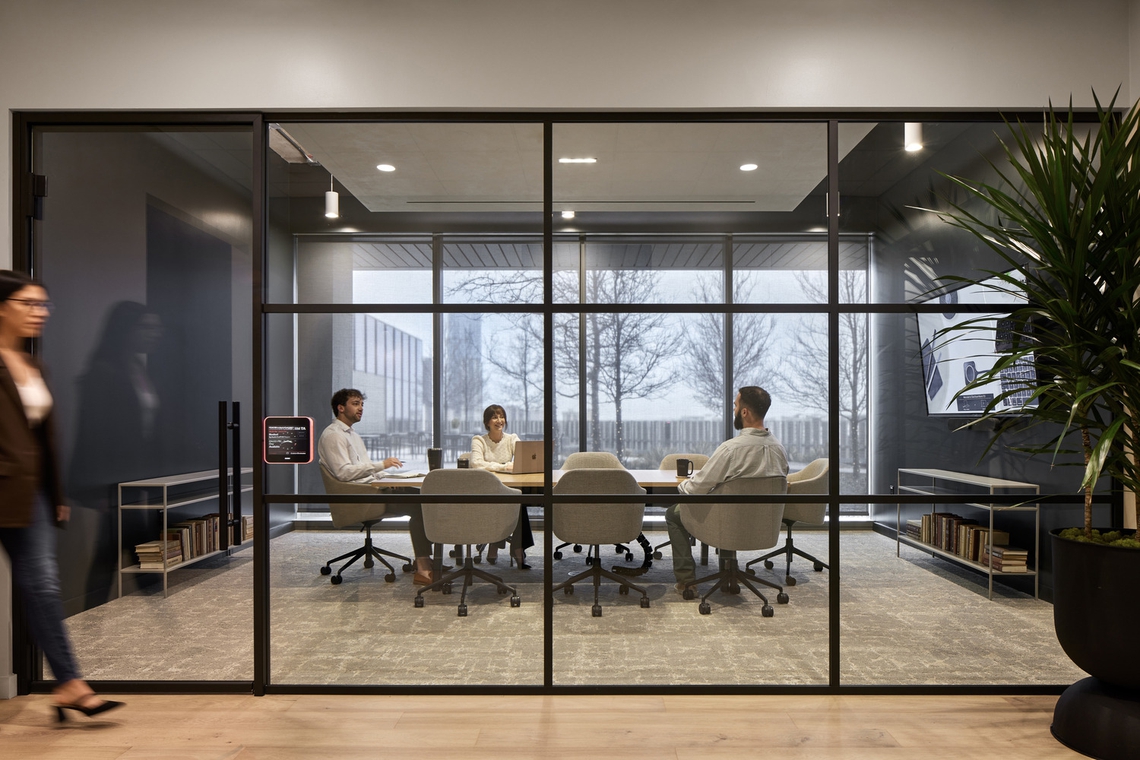
What are you both seeing in terms of return-to-office strategies in your regions? Are companies committing to a clear path or still hesitating between remote, hybrid, or full return?
Lindsay: In the U.S., the experimentation phase is over. We are seeing most of our clients commit to a long-term strategy. Led by very large organizations, most small and mid-size companies are also committing to a strategy. And while there are some exceptions, most of our clients are committing to the majority of the work week to be in the office. The commitment to a strategy is creating new projects across many parts of the U.S. as workplaces align with polices in place.
Doua’a: In contrast, in the U.K., there’s less commitment to long-term workplace strategies. Very large organisations are taking different approaches - some officially adopting flexible working while others are requiring employees to spend the majority of the work week in the office. The majority of mid-size to small companies and organisations are operating with flexible arrangements at the moment but are unsure if this will be a long-term strategy. This lack of clarity in organizations is causing delays in real-estate decision making and delaying workplace projects.
Takeaway: While the global response to return to work remains varied, it’s clear that clarity in policy does help move projects forward.
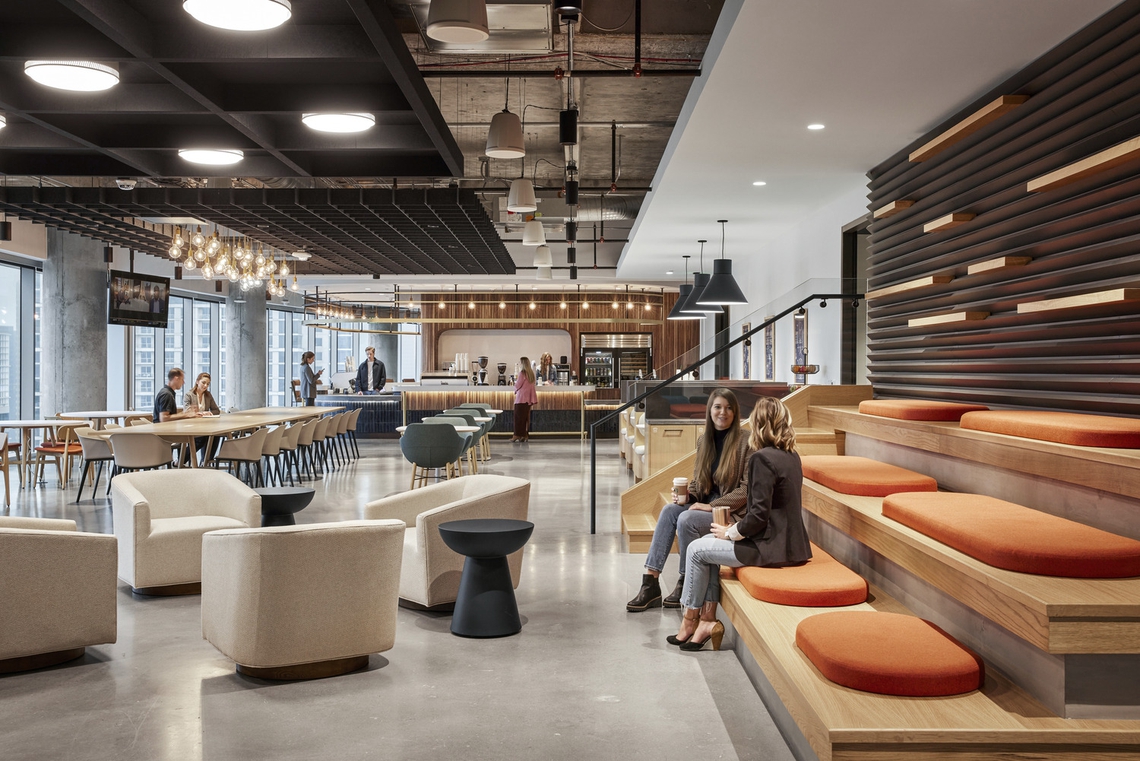
How do cultural differences between the U.S. and U.K. influence the way companies are approaching workplace strategy - are there particular drivers or barriers in each region?
Lindsay: As pandemic-era policies recede into the background, large U.S. corporations have clearly leaned toward a stronger in-office presence. This shift is setting the tone in major cities, encouraging other companies—particularly in larger metropolitan areas to follow suit. Financial institutions and law firms have also been at the forefront, investing in high-quality buildings and workplaces as a tangible demonstration of their commitment to employees. The message is clear: If we’re asking you to spend time here, we’re ensuring that your workplace experience is exceptional.
Doua’a: The U.K. is influenced by the European market to a degree and is still adopting more flexibility than shown in the latest U.S. trends. U.K. corporations however are leaning toward “enticing” their employees to return into the office vs “mandating” it. With that, organizations are investing in the workplace and asking also for an exceptional workplace experience that will make their employees want to be in the office more.
Takeaway: U.K. is where the U.S. was in terms of return to office two years ago and one could expect that international or large companies in the U.K. will soon look to once again fill their offices. Companies should expect that employees' needs for the workplace will have evolved and leaders should consider how the office supports employee well-being, productivity and culture and then design a space to support it.
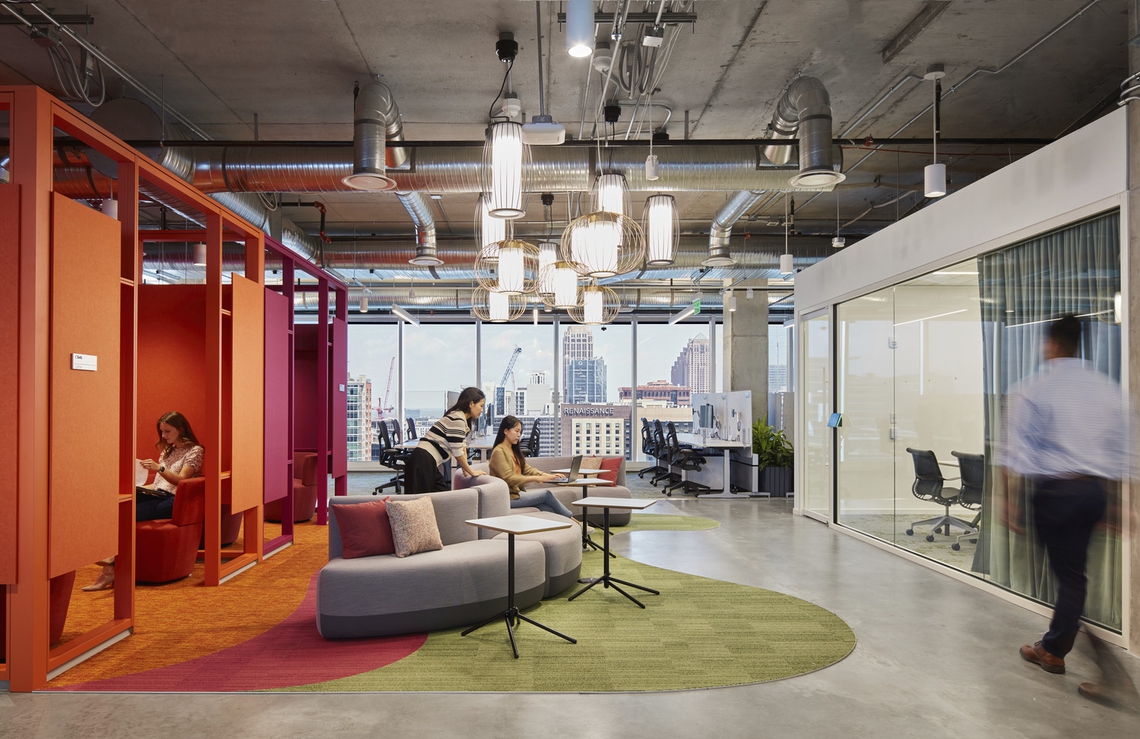
Do you think not making a firm decision on workplace strategy is more damaging than choosing a direction - however imperfect - and committing to it?
Linday: I do believe keeping workers in limbo is difficult. Fatigue and frustration can set in where there is a lack of clarity. It’s hard to build culture when the expectations aren’t clear. We see pockets of different cultures take hold around specific teams and managers who make their own decisions in the absence of clear policies from leadership.
Doua’a: I agree, not making a decision one way or the other is a hindrance to both the company and the employees. We often talk to managers and employees, and we see both sides struggle when no clear policies have been made.
Takeaway: When companies delay their return-to-office decisions, the uncertainty can disrupt connections and weaken workplace culture.
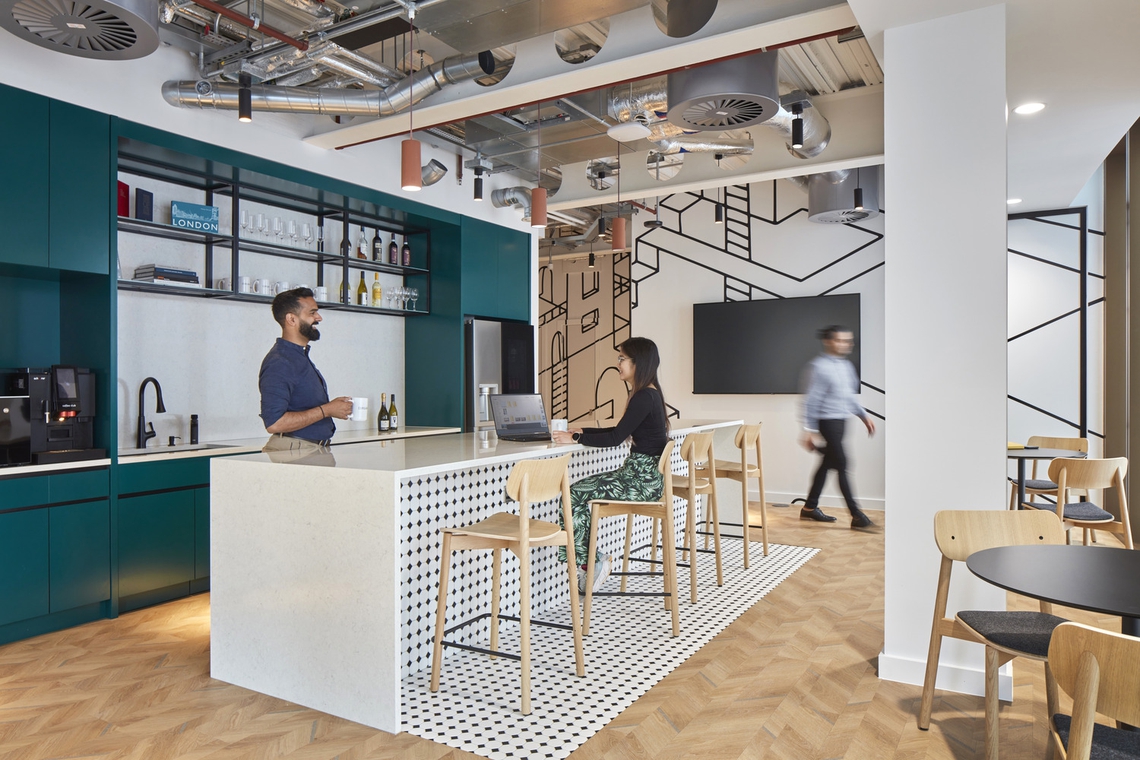
When a company does commit to a clear workplace strategy, how does that affect the way you design their space? Can you share an example where this clarity led to something really successful?
Lindsay: When an organization has committed to a workplace policy and done the work to communicate the how, where and why behind it – the design of the workplace is significantly impacted. We can unearth the types of spaces that employees need and want for their in-office experience – from individual spaces, to gathering and social needs and the needs of office-based teams. We can design spaces fit for purpose rather than diluting ideas because we aren’t exactly sure what they will be used for. There is a sacrifice to designing everything to multi-task.
Doua’a: When a company’s policy is clear and is driven by a deep understanding of the company culture, employee needs and the company’s organizational goals, then we’re able to design an office that is fully curated to support those needs. When a tech client of mine made the decision to move to flexible working as a long-term strategy for the company, we were able to help them significantly reduce their amount of desking through a thorough workplace strategy and maximize on what truly mattered for them - spaces for collaboration and innovation. The result was an office that functioned perfectly for our client and their employees, and I was happy to see many of the employees celebrate their office by taking videos of their new space and share it on social media, inviting people to join the company and the “best office in London!”
Takeaway: Design impacts collaboration, culture and business results.
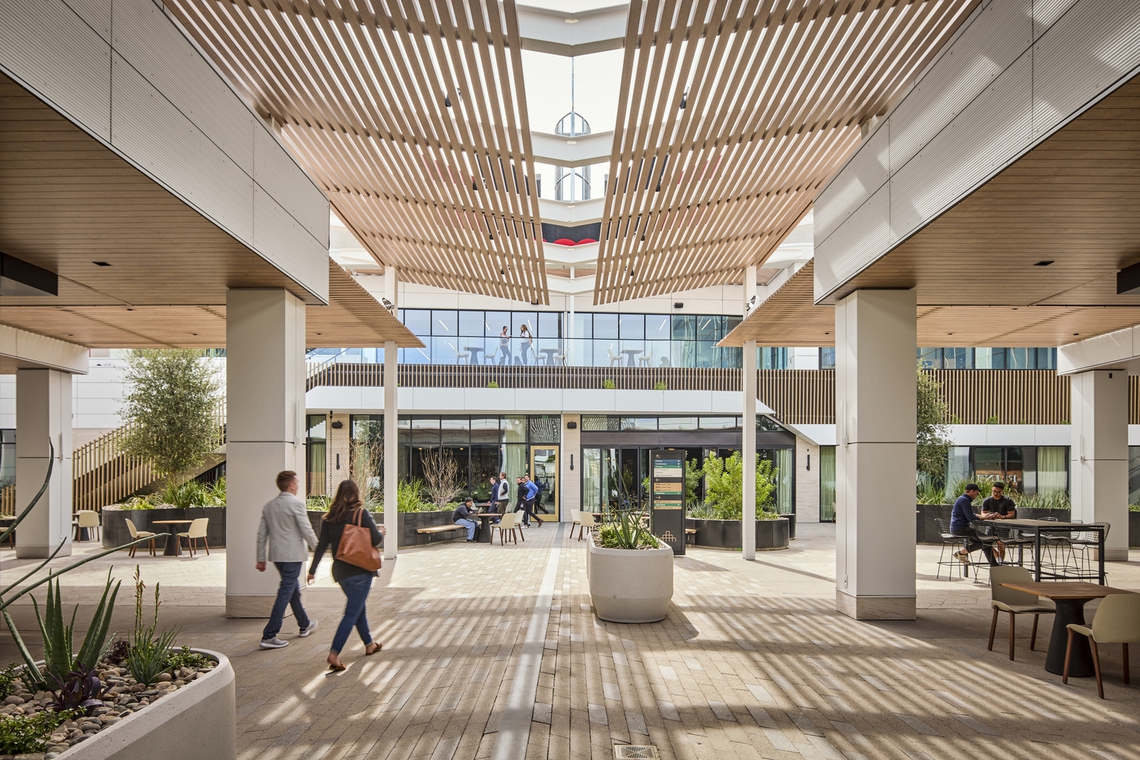
We’re hearing more about companies raising the quality of their office environments to attract people back in. What does “quality” mean today - and how is that showing up in your recent projects?
Lindsay: Quality in the U.S. today begins at the neighborhood level, where companies and employees engage with a broader network of amenities and services. Beyond single-user campus environments, organizations increasingly prioritize locations that offer walkability, vibrant retail, diverse dining, outdoor spaces, and boutique fitness options. From there, the building itself must deliver sought-after amenities—shared spaces, outdoor areas, lounges, and quality coffee service rank among the top preferences. Buildings that foster activation at the ground level, moving beyond traditional grand lobbies, are performing well across the U.S.
Doua’a: A quality office in the U.K. is a commute-worthy office. It goes beyond aesthetic and prestige with wellness and comfort at the core of the office design. The most successful offices are the ones with a variety of purpose-driven spaces that give the employees the ability to choose how they do their tasks and the ability to reconfigure and tune the space to their needs.
Takeaway: Employee expectations are higher than ever, from building location to amenities to focus on Indvidual wellness and productivity, we are asking a lot of our workplaces today.
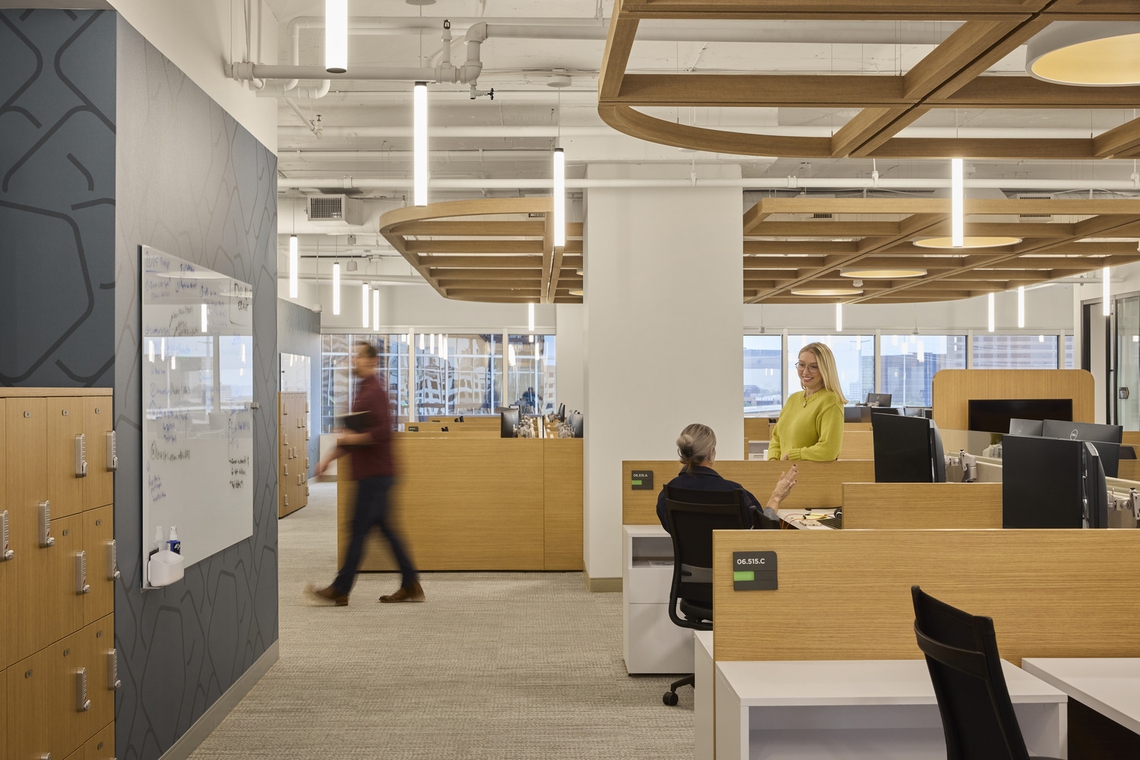
How do you make sure that office design reflects not just practical needs, but the company’s mission, values, and culture - especially in a hybrid or globally dispersed workforce?
Lindsay: For the design team, the most important thing is access to the right team members in an organization. We thrive on learning about our clients and what is important to them. Successful projects prioritize time at the front end for the design and consultant team to really dive in and learn about an organization. Experiencing how all employees connect and interact in both virtual and physical spaces is critical to be able to design spaces that can enhance those experiences.
Doua’a: I agree with Lindsay, listening is key and we’re good at it. We spend significant time learning about the company. We listen and learn from employees at different levels and in different locations if required, we look at their data and analyze it, and we strive to understand its ethos and values from those who know it best. This way we can ensure that we’re always staying true to that vision while advising them on global trends and design that can support the company’s future.
Takeaway: Successful projects engage their strategy and design teams early, giving them access to truly learn about the organization and how the workplace can be a tool for success.
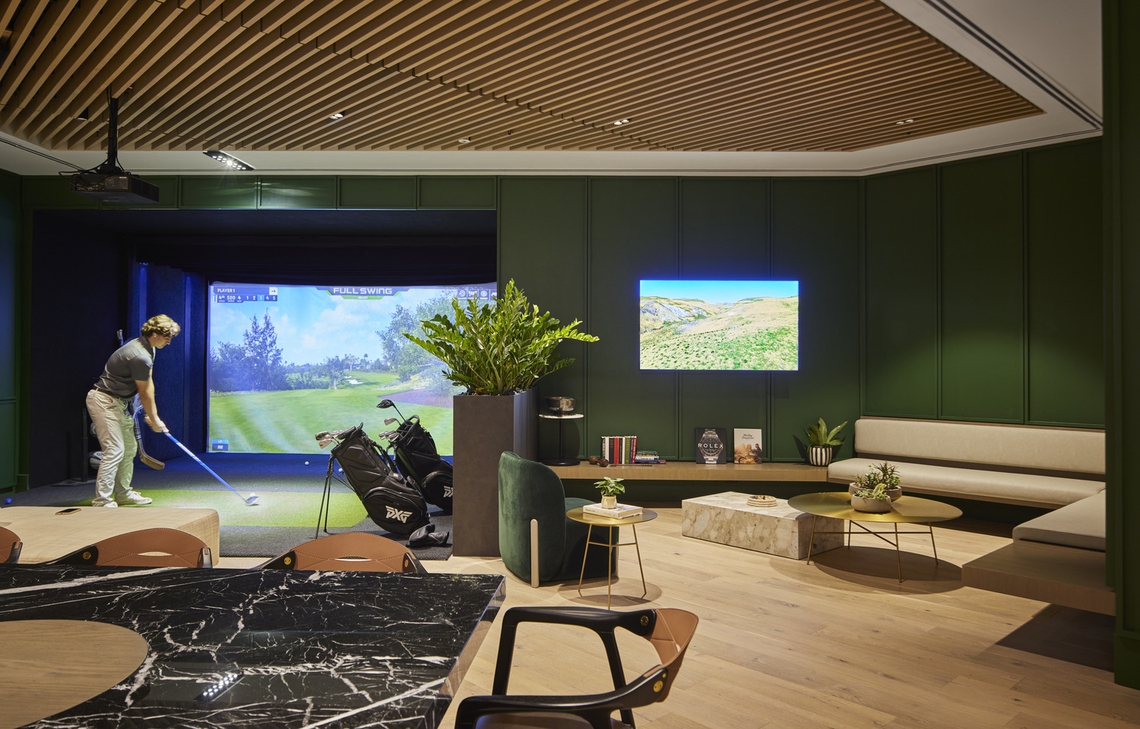
Have either of you seen cases where the physical office space played a pivotal role in reconnecting teams or advancing a company’s goals post-pandemic?
Lindsay: I‘d like to highlight a repositioning project because of its ability to impact so many different organizations. We worked for Tourmaline Capital in the re-imaging of The Esplanade office complex in Pheonix, Arizona. The approach was to create world class amenities to elevate the experience of all tenants in the complex. The approach was not about any one thing but rather the sum of the parts – blending social and work. From bookable spaces to health and wellness and food and beverage, they are supported by a technology platform that makes the experiences accessible to the users. The result of the design strategy is a holistic environment that inspires connection, productivity, and well-being, and meets the demands of a new dynamic work culture.
Doua’a: We were tasked with designing a new office for an insurance company, and they wanted to transform the space into a "hospitality hub." The goal was to create an environment that not only employees would be excited to come to, but also one where business partners and clients would want to work from. We designed a hospitality-forward space where every area, from the common areas to the workspaces, received the same level of luxury and attention—there were no “back of house” rooms. A large portion of the space was open to people outside the organization, fostering an inclusive, collaborative environment. This concept ultimately brought opportunities to their front door, they had more chance encounters, more discussions, more prospects and more financial gain. Most importantly, they ended up elevating the way they do business, and their employees returned to the office post-pandemic in full force.
Takeaway: The hospitality influence on design is a global trend, connecting people in spaces that are comfortable and beautiful.
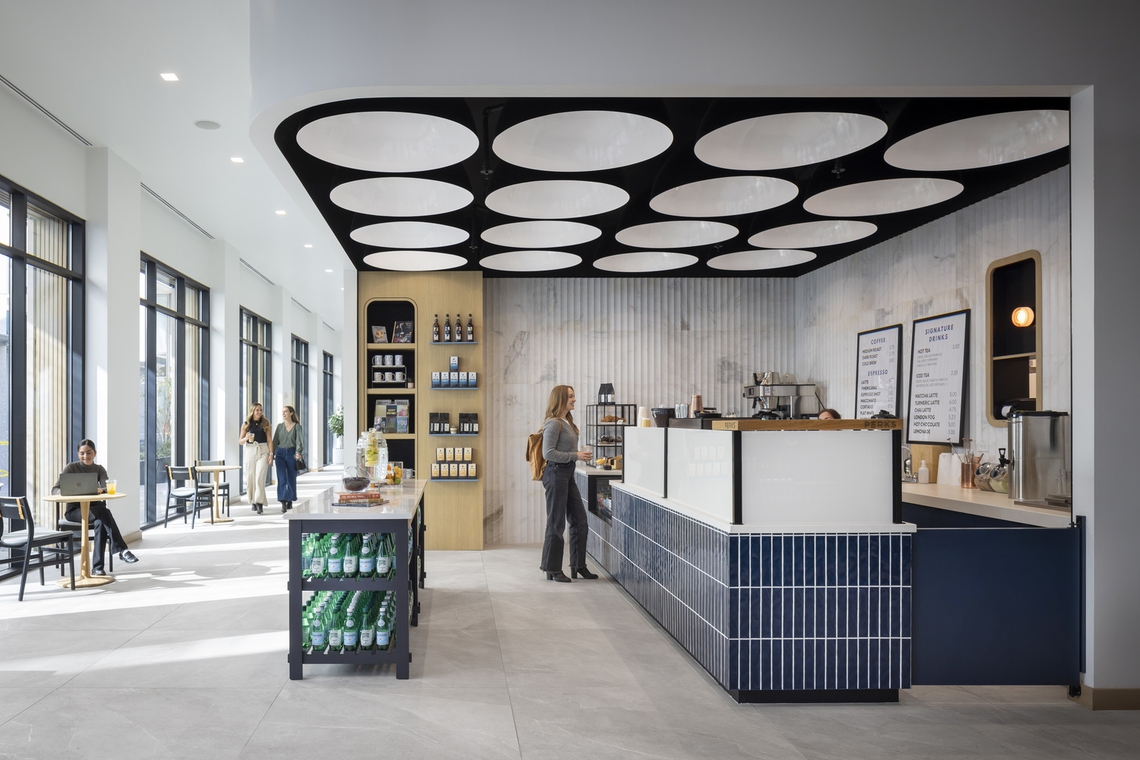
And finally - if you had one piece of advice for organisations stuck in workplace limbo, unsure how to move forward, what would you tell them from a design perspective?
Lindsay: Start with the why. It is difficult to leave behind all the challenges of the past few years - pilot programs or temporary policies cloud everyone's perspective. However, when we work with companies that are unsure of the role of the workplaces in their business strategy, we start with a conversation about the purpose of their workplaces. We discuss how the place can support business goals and culture - recruitment and retention, new customer acquisition, innovation and invention . . . those are some of the drivers that significantly impact how a company might choose to use their workplace.
Doua’a: Yes, uncovering the purpose of their workplace is absolutely key to unlocking that decision to move forward and we have so many tools to help them realize and categorize what really matters to them. From workshops to visioning sessions to data analysis and more, we try to unearth the reason behind that limbo stage and drive conversation forward, we also help them visualize what each option can look like and what that means for their future space. This usually puts things into perspective for them in a more tangible way that they haven’t been able to realize before.
Takeaway: The importance of understanding an organisations drivers is the foundation of great design.
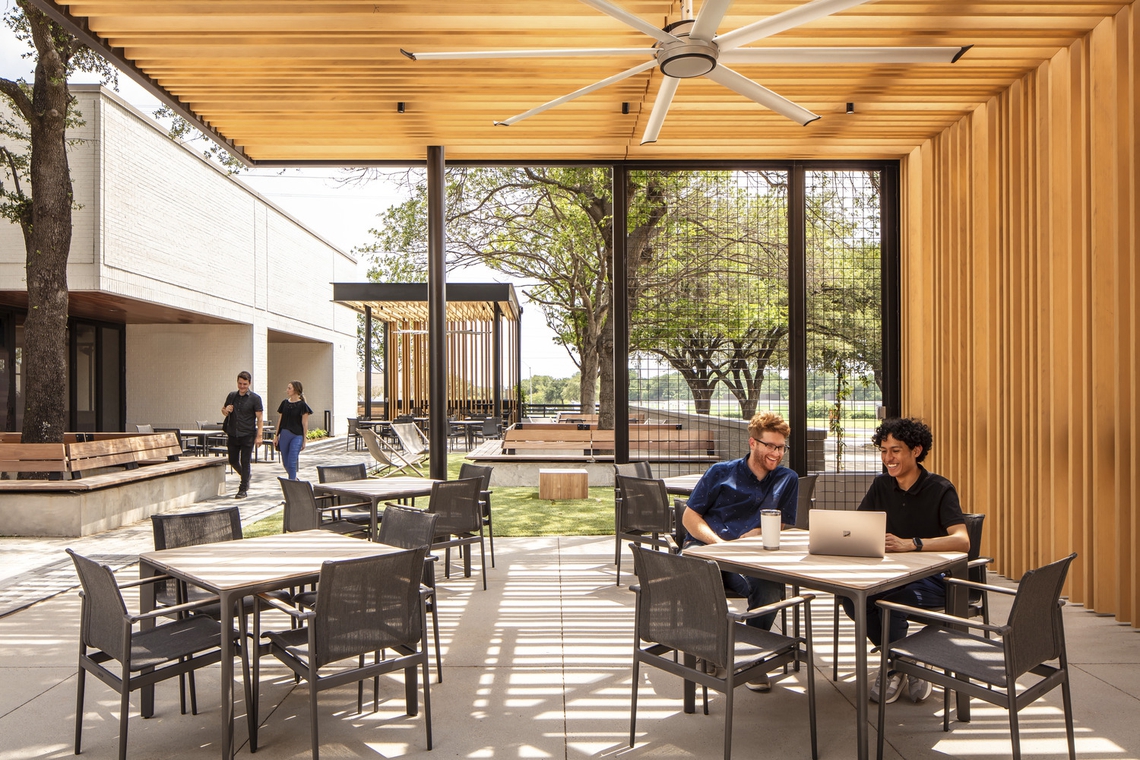
In this transatlantic conversation Lindsay Wilson and Doua’a Abdulhadi explore how workplace strategies are evolving across their respective regions. From differing approaches to hybrid work and policy clarity, to how cultural expectations are shaping office design, their insights reveal both the contrasts and common ground between the U.S. and U.K. markets.
What emerges is a shared emphasis on designing workplaces that are purpose-driven, flexible, and deeply connected to company culture, reminding us that clarity, empathy, and intentionality are key to creating spaces where people truly want to be!
